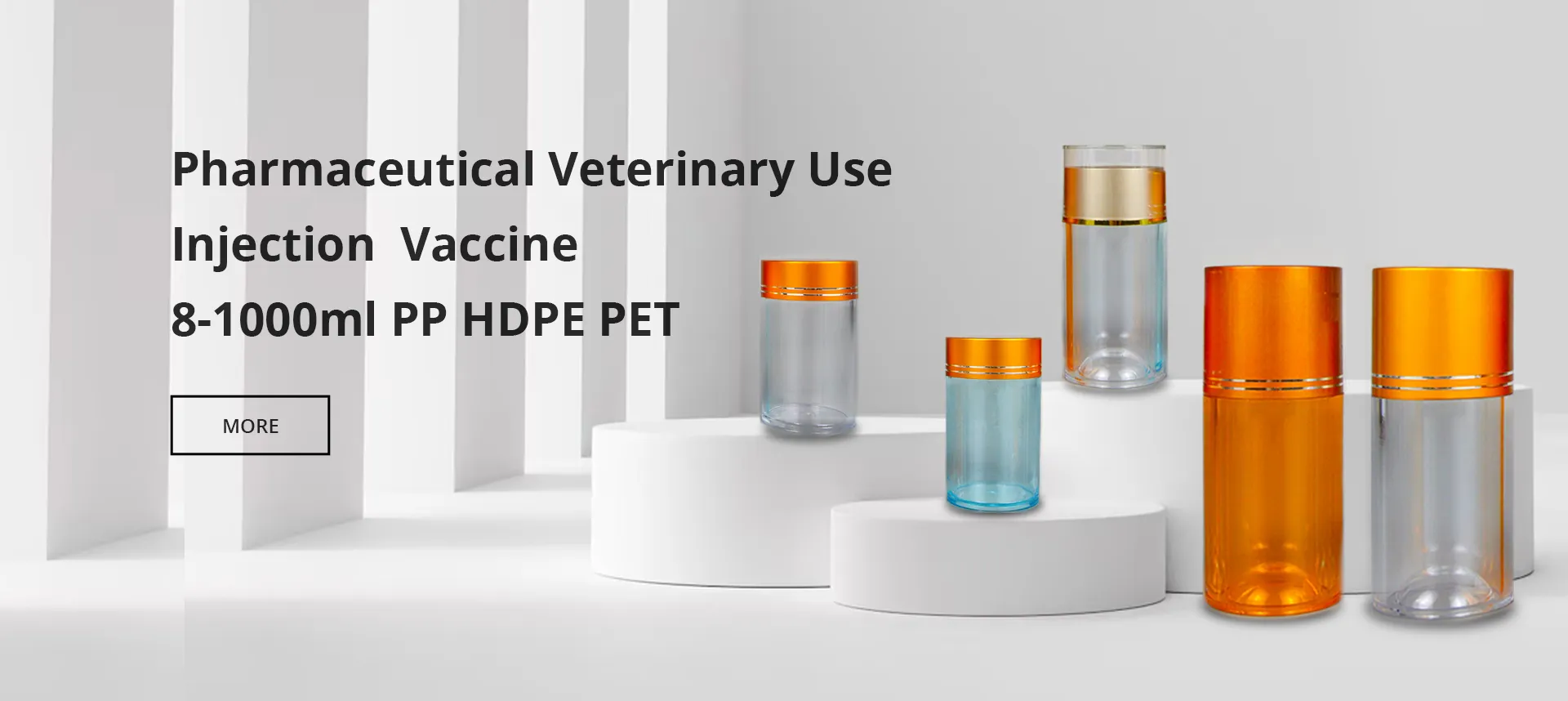Innovative Designs for Eco-Friendly Vaccine Bottles Made from Sustainable Plastic Materials
The Evolution of Vaccine Storage The Plastic Vaccine Bottle
In the fight against infectious diseases, the development and distribution of vaccines play a pivotal role. Behind the scenes of these medical marvels lies a crucial component that often goes unnoticed—the vessel that holds the vaccine itself. Traditionally, glass vials have dominated the market for vaccine storage due to their inert properties and the ability to maintain sterility. However, the emergence of plastic vaccine bottles is revolutionizing how vaccines are stored, transported, and ultimately delivered to patients.
Plastic vaccine bottles offer numerous advantages over their glass counterparts. One of the most significant benefits is their weight. Plastic bottles are considerably lighter, making them easier to handle and transport, particularly in remote areas where access to refrigeration and healthcare facilities may be limited. The reduced weight can lead to lower shipping costs, making it more feasible for pharmaceutical companies to distribute vaccines globally, especially in low-resource settings.
Additionally, plastic vaccine bottles can be produced in a variety of shapes and sizes, providing flexibility in packaging design
. This adaptability can facilitate better storage solutions, allowing for more compact arrangements in cold chain systems, which is critical for maintaining the efficacy of vaccines. Cold chain logistics is essential for vaccine stability, and the ability to stack or store these plastic bottles efficiently can make a significant difference in managing supply logistics.Another advantage of plastic is its resilience. Unlike glass, which can break easily, plastic bottles are much less prone to shattering. This durability is vital in high-pressure environments, such as during transport in rough conditions or in areas where healthcare officials may need to handle multiple packages quickly. This characteristic not only minimizes waste but also ensures that valuable vaccines remain intact and ready for use.
plastic vaccine bottle

Moreover, plastic bottles can be manufactured with various barrier properties. Some plastics can be designed to be resistant to oxygen and moisture, effectively extending the shelf life of vaccines. This innovation is essential for vaccines that are sensitive to environmental conditions, providing an extra layer of protection without the complexity of using additional packaging materials. Furthermore, advancements in polymer science allow for the customization of materials to ensure that they do not interact with the vaccine components, preserving the integrity and effectiveness of the vaccine.
The shift towards plastic vaccine bottles has also prompted discussions about sustainability. The pharmaceutical industry is increasingly aware of its environmental impact, and using recyclable or biodegradable plastics can help mitigate this issue. Efforts are underway to develop eco-friendly alternatives that can provide the same protective qualities as traditional plastics while reducing the carbon footprint produced during manufacturing and disposal. This commitment to sustainability aligns with global efforts to enhance green practices within the healthcare sector.
Despite the advantages, the transition from glass to plastic is not without challenges. Regulatory approval for new packaging materials can be a lengthy and complex process, often requiring extensive testing to ensure safety and efficacy. Additionally, there is a significant need for education and training among healthcare providers and patients regarding the handling, storage, and application of vaccines in new packaging formats.
In conclusion, the development of plastic vaccine bottles marks an important advancement in the field of vaccine storage and distribution. With their lightweight, durable, and customizable nature, these bottles are paving the way for more efficient vaccine distribution, particularly in underserved regions. Furthermore, their potential for sustainability aligns with the growing emphasis on environmentally friendly practices in healthcare. As we continue to navigate the complexities of vaccine delivery in a globalized world, the role of innovative packaging solutions will undoubtedly be instrumental in enhancing public health outcomes.
-
Aesthetic Makeup Spray Bottles | Fine Mist Empty RefillableNewsAug.19,2025
-
White Plastic Veterinary Vaccine Vials | Lab Liquid BottlesNewsAug.18,2025
-
Plastic Medicine Liquid Bottle: Secure Flip Top Drug VialsNewsAug.17,2025
-
Durable 250ml Blue Plastic Vaccine Vial for Lab & Vet UseNewsAug.16,2025
-
Sterile Virus Sample Tubes: Secure & Reliable Specimen CollectionNewsAug.15,2025
-
White 250ml Plastic Vaccine Vial for Lab & Vet MedicineNewsAug.14,2025
























